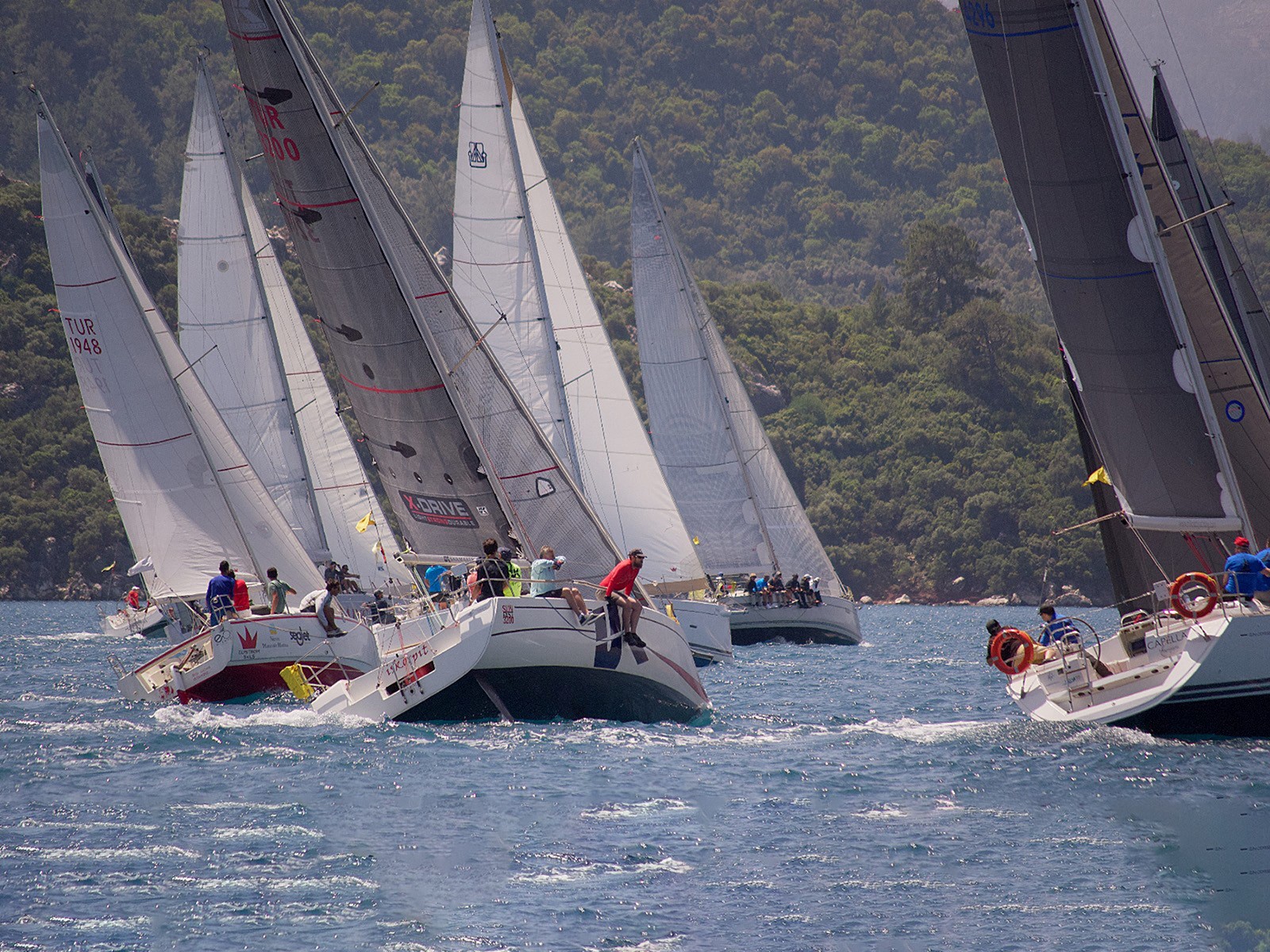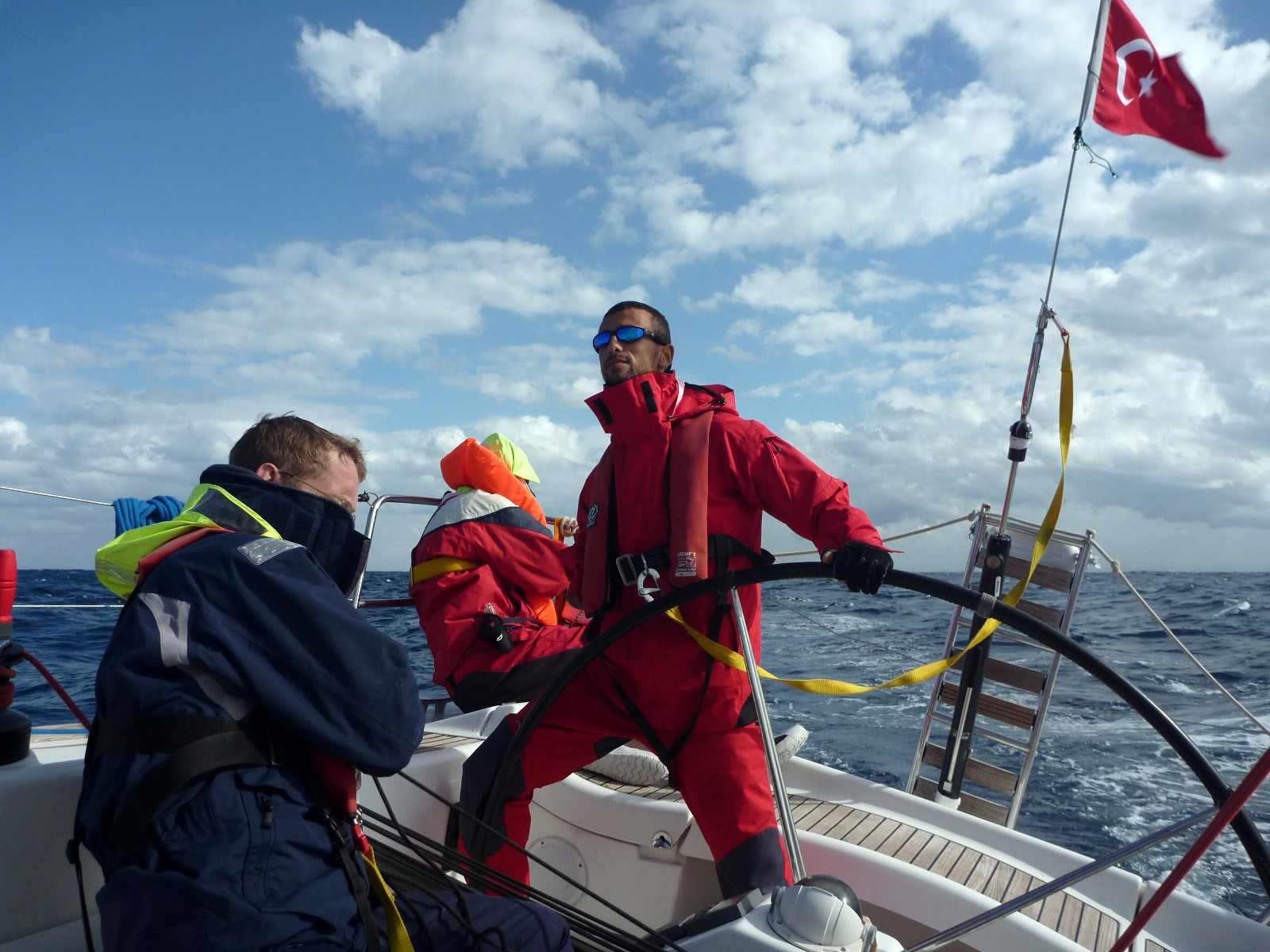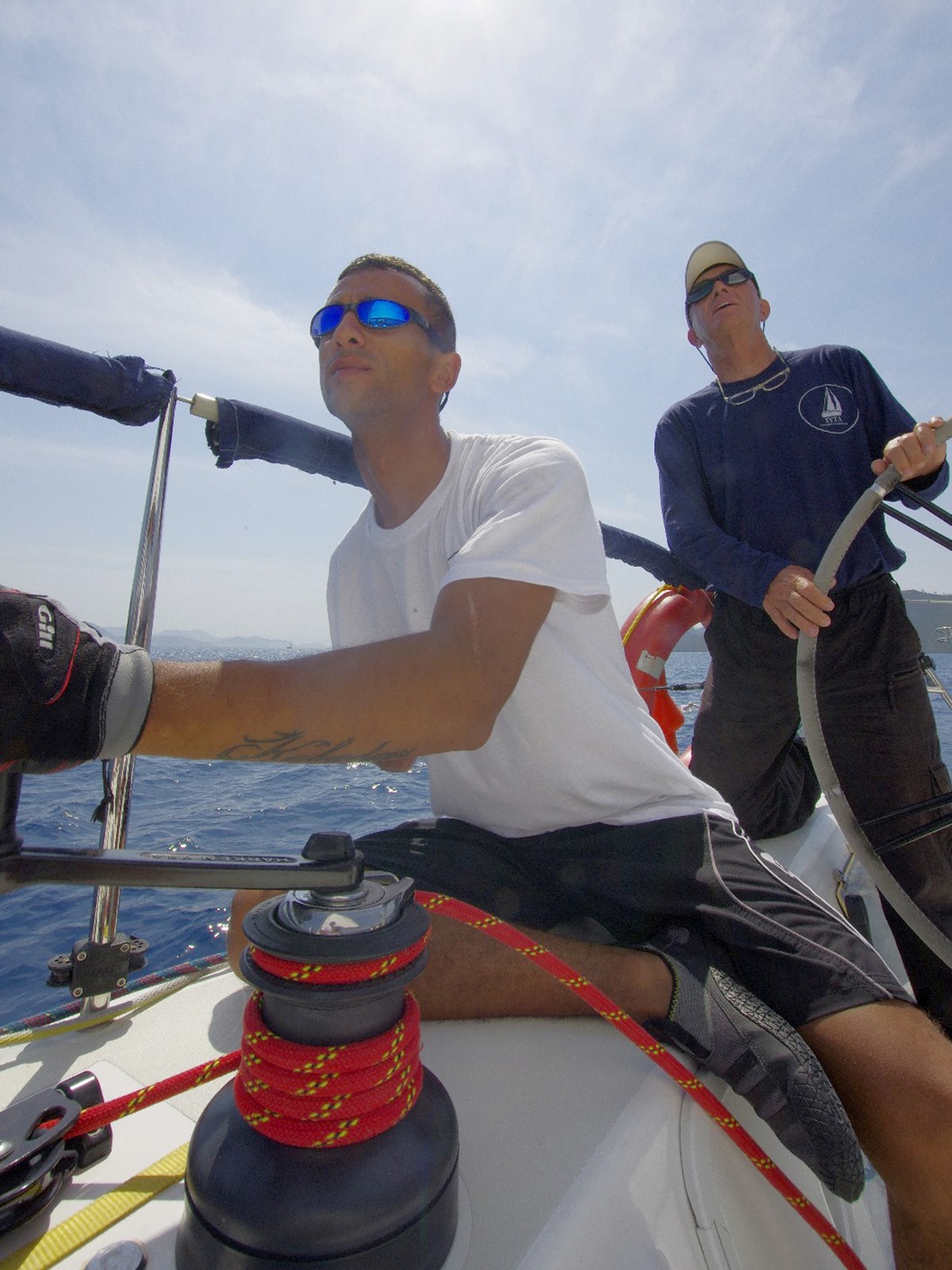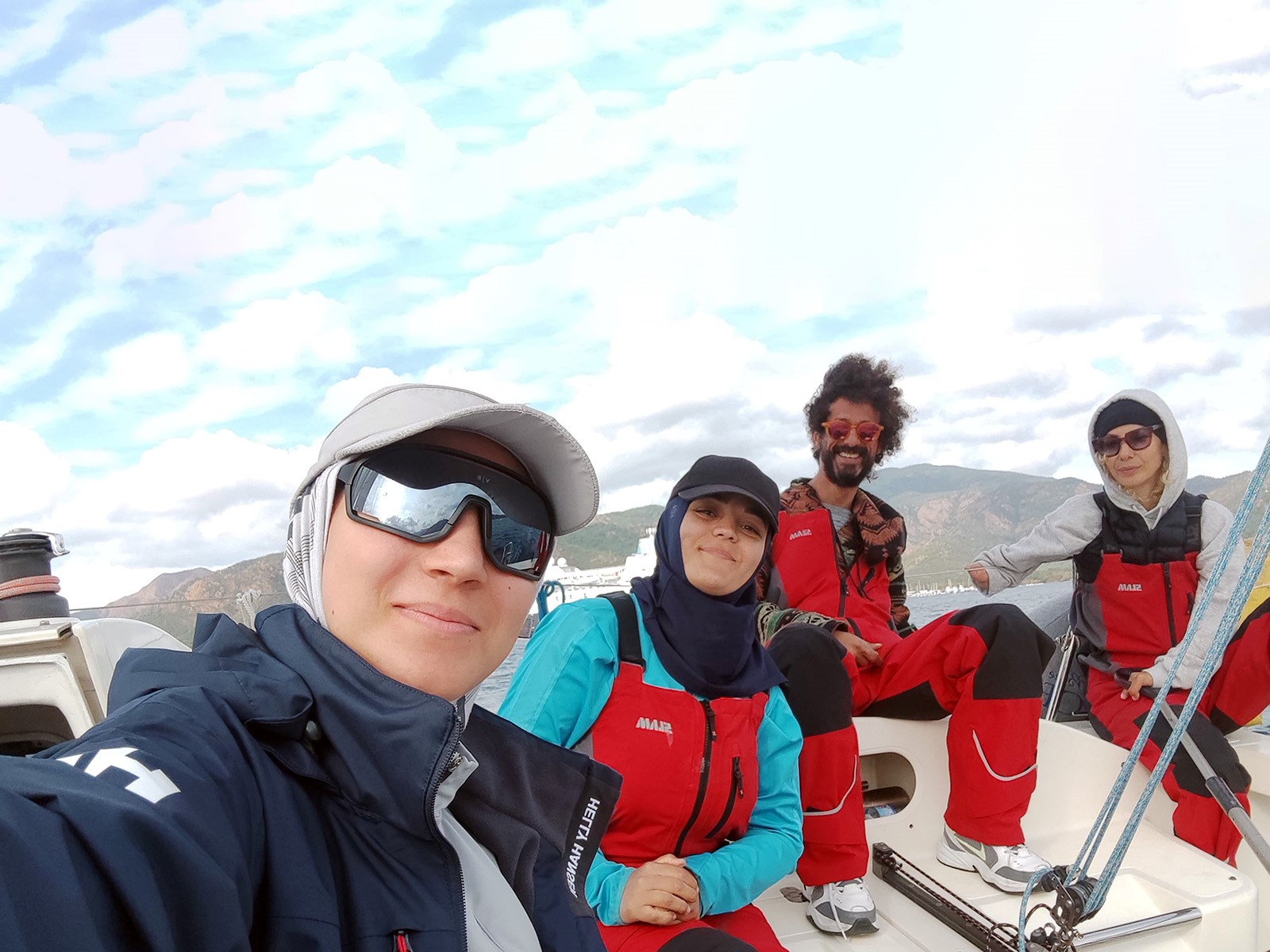Disabled Sailing Guide
Sailing for people with disabilities is still a relatively new and lesser-known subject in our country. Yet this sport has its own story and many tips and tricks. This article is an attempt at providing a brief guide on the subject.
Hüseyin Akbulut, National Paralympic Athlete, Sailing Instructor
I had previously given an interview for the 10th issue of Highlights and shared my personal story about disabled sailing with the readers. But we did not have the opportunity to discuss the development of this sport in Turkey and some important details in that interview. This time, I will try to cover the subject under the headings in the form of a brief guide.

How did disabled sailing begin?
Disabled sailing in Turkey officially began in 2017 with the MR. 2.4 class boats organized by the Turkish Physically Disabled Sports Federation in Mersin. These boats were brought to Turkey by Ergin İmre. Ergin İmre saw these boats specially built for the disabled abroad and liked them very much. He bought 5 of these boats and donated them to Mersin sailing club so that disabled individuals can compete under equal conditions in our country. Dozens of disabled individuals in Mersin were able to meet the sea thanks to these boats. However, disabled individuals in other cities did not have access to these special boats, and for many years this opportunity was limited to Mersin.
How did I get started?
One day, with the support of ERGO Insurance, İnce Karalar and Şentop Insurance, I became the owner of an MR. 2.4. Then I started training my other disabled friends with this boat. Eventually, there were associations and clubs of individuals with disabilities from different cities who wanted training. So, I built a trailer to transport the boat easily. I started giving sailing training in cities such as Izmir, Antalya, Istanbul and Alanya by moving the boat there. My only goal was for sailing to be practiced in more cities. Over the years, I had the chance to compete in yacht classes other than MR. 2.4 and to race with professional sailing teams. I received my first sailing instructor certificate in 2012. When everyone thought that I could not do this with a single hand, Cumhur Gökova trusted me and trained me.
How did we become a team?
While working with my disadvantaged friends, I kept hearing from them that they wanted to compete in yacht races. There being no yacht designed for disabled people, this time I bought a normal racing boat and started training with the team I formed with my disabled friends.
We were all feeling freer every moment we spent at sea. There were no people at sea, as on land, looking at us with pitying eyes or telling us what we should and should not do. We were a handful of people pushing their limits to the fullest, taking pleasure in learning how to turn their disadvantages into advantages. By the evening we were drinking beer against the sunset, our hands calloused and our knees blue.
It was then that we learned that we were the only disabled yacht team not only in Turkey but also in the world. When this attracted the attention of the press, many of my disadvantaged friends contacted me on social media and expressed their interest in learning to sail. We started giving one week of free sailing training to our disabled friends from all over the country with the support of Setur Netsel Marmaris Marina for boat mooring, Marmaris Bono for meals, and Marmaris and Acarkent Rotary for transportation and accommodation.

The team expands and spreads across Turkey
Standard sailing training takes between 5-6 days. I started training with individuals with disabilities in accordance with the YY5 curriculum. This way, I wanted to transform going out to sea for individuals with disabilities from just an activity to real training. In fact, although the age range in which I provided training was 18-25, I also included younger and enthusiastic friends in the training with consent from their families.
Some of the individuals with disabilities who participated in the sailing training started choosing seaside cities and universities with a sailing club or sailing community when they were going to university. Five of them chose professional seafaring as their profession.
Methodology of training
Individuals with disabilities do the tasks on the boat more slowly because of their disadvantages. Repeating frequently, finding the right technique and the right sitting position for the individual makes the movements easier and faster.
For this purpose, I make small modifications to the rigging of the boat so that individuals with disabilities can move freely on the boat. I use extra pulley systems for my friends with less strength to reduce the load on the ropes. I attach the throttle lever to the tiller using an extra apparatus for my friends with shorter limbs or no limbs at all and lengthen them. Thus, my friends, who at the beginning of the training were extremely slow at kedging and could not tie the breast line, started to do these tasks much faster as their self-confidence increased in the following days of the training.
At the end of the training, each of my friends could start the engine on their own, drop the downwind and upwind ropes, and kedge without requiring any help. They could leave the marina, unfurl the mainsail, then the genoa and sail. The students were able to do tacking and jibing on their own, dock at the fuel dock, moor the boat, leave the dock with the help of springs and re-enter the marina and tie up to the pontoon.

Pedagogical aspect of the training
Society does not provide enough support and dedication for people with disabilities to achieve something. This is the case not only in our country but all over the world. Families of individuals with disabilities, in particular, can be a bit overprotective. People on the street often try to be more polite when approaching individuals with disabilities.
An individual with disabilities immediately understands what you think about them from the way you look at them, your body language and the way you speak. Individuals who have recently become disabled may be much more reserved because of the protectiveness of their families. It is almost impossible for these individuals to achieve anything on their own, as sometimes even their shoes are tied by a member of their family. Accepted helplessness has unfortunately spread like a virus among individuals with disabilities, especially after the recent earthquake disaster.
However, there is no difference between disadvantaged and healthy individuals learning new things. Everything can be achieved when the necessary improvements are made according to the disability of the individual. The important thing is the right technique, the right way of showing and teaching.
Almost all of my friends who get on the boat for the first time think that they will never be able to handle the boat because of the statements they have heard over the years like "you cannot do that, that is not for you!". After seeing how easily I can do all this alone and with one hand, it does not take long for them to realize that they too can do the same.
For all these reasons, when working with individuals with disabilities, you should first and foremost start by recognizing that they are no different from you.

Organizing the life
In order for individuals with disabilities to be active in life, environmental conditions should be improved, architectural structures should be designed with the disabled in mind, and toilets in social places such as cafes and restaurants should be designed to be suitable for the disabled from the very beginning. For example, a disabled individual living in Turkey using a wheelchair stay at home because they cannot use public toilets; they cannot be a part of life just because they cannot fulfill this basic need. Walkways for the visually impaired become unsafe either because of a utility pole or a vehicle parked on the sidewalk. Of course, there are good examples too. Setur Netsel Marmaris Marina is a perfect home for disabled individuals and athletes with its disabled car parking lot, ramps and disabled toilets, and a great example for everyone else. All pontoons, restrooms, stores and management offices within the marina are designed in such a way that individuals with disabilities can use them without requiring any assistance. We hope that this spreads rapidly.
When you get on the boat, you escape the "accepted helplessness" that haunts you. This is because on that boat you realize that we are all disabled and that together we can overcome any obstacle that we may encounter at sea. Just for this feeling alone it is worth fighting for!


